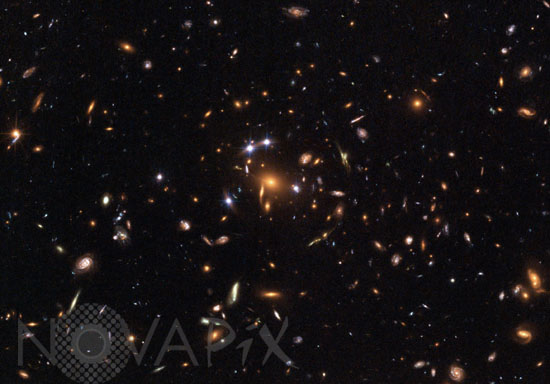Photo Agency - Astronomy - Space - Nature

Galaxy Cluster SDSS J1004+4112
author: ESA/Nasa/Novapix
reference: a-amg90-00140
Image Size 300 DPI: 19 * 13 cm
The most unique feature in a new image taken with the NASA/ESA Hubble Space Telescope is a group of five quasar images produced by a process called gravitational lensing, in which the gravitational field of a massive object - in this case, a cluster of galaxies - bends and amplifies light from an object - in this case, a quasar farther behind it. The background quasar is the brilliant core of a galaxy. It is powered by a black hole, which is devouring gas and dust and creating a gusher of light in the process. When the quasar's light passes through the gravity field of the galaxy cluster that lies between us and the quasar, the light is bent by the space-warping gravity field in such a way that five separate images of the object are produced surrounding the cluster's centre. The fifth quasar image is embedded to the right of the core of the central galaxy in the cluster. The cluster also creates a cobweb of images of other distant galaxies gravitationally lensed into arcs. The galaxy cluster creating the lens is known as SDSS J1004+4112 and was discovered as part of the Sloan Digital Sky Survey. It is one of the more distant clusters known (seven billion light-years, redshift z=0.68), and is seen when the Universe was half its present age. The galaxy hosting the background quasar is at a distance of 10 billion light years (at redshift 1.74). The quasar host galaxy can be seen in the image as faint red arcs. This is the most highly magnified quasar host galaxy ever seen.
Contact : Stéphane Aubin +33-(0)9-51-26-53-76
© Novapix - All rights reserved


